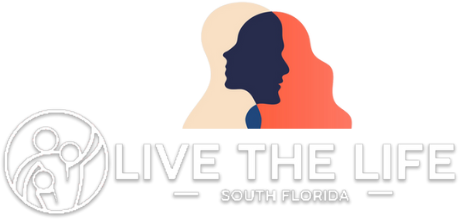The Success Sequence: What Is It & Why It Matters
It’s never too late to take steps toward a brighter future and more stable family life: follow the Success Sequence.
Achieving the American Dream, such as reaching the middle class or higher, seems a distant goal for many people, especially young adults. But what if we told you there is a path to success in life?
First identified by social historian Barbara Dafoe Whitehead and sociology professor and author Marline Pearson, the “Success Sequence” is a proven formula to help young adults succeed in America. There are three main steps to take that will ultimately lead to prosperity for men and women of all races and backgrounds:
Live the Life South Florida aims to strengthen marriages and families through healthy relationship education, from middle school to senior adults. Considering our mission, we have partnered up with the Institute for Family Studies to better educate people on the Success Sequence.

According to the latest research findings by the Institute for Family Studies, 97% of young people who follow all three steps above do not become poor adults. Additionally, 90% of young adults that complete only the first two steps (getting their high school degree and a full-time job) are not poor in their 30s. However, most adults, about 52% of them, who are in their 30s, and missed all three steps, unfortunately, find themselves in poverty.
Although the success sequence seems like common sense, it serves as a compass for young adults in adverse circumstances to avoid poverty and yet help them move up to the middle class and accomplish the America Dream.
Furthermore, let’s discuss each step’s impact on a young adult’s life.
- Graduate high school

Education and access to information are the base of any success in life, and achieving the American Dream is highly correlated to one’s level of education. Although many think college is essential to achieve the American Dream, it is not the only way to a prosperous life. Young adults from disadvantaged backgrounds who follow the success sequence are much more likely to forge a path toward the American Dream than their peers who did not follow it. Finishing high school helps about 70% of young adults avoid poverty in their 30s.
- Get a full-time job

After receiving a high school degree, getting a full-time job is a big step toward success. Work provides direction, discipline, a community, and income, which are all critical aspects of a good stable life. Although many young adults may choose not to move forward to step three—get married and have kids—just completing these two steps already secure them to a more financially stable life and puts them on the right path to the American Dream.
- Get married before having children

As young adults achieve a certain level of stability in life, professionally and financially, it is common for them to want to start a family. This desire leads to the last step, with an important note: get married, but before having kids. The reason behind this is that when a young couple puts their marriage before becoming a mom or a dad, they secure themselves to stay out of poverty and guarantee a brighter future for their kids. According to research, nearly all the young couples that marry before kids, about 97% of them, are not poor in their 30s, doubling their chances of realizing the American Dream.
The critical point in this step is that the family is more likely to stay together by having kids after committing to a long-term relationship. Regarding the kids’ future, children born to unmarried parents are more likely to be poor, experience abuse, and get in trouble with the law. Even though many parents live together, raising a child in a marriage setting is the best path to a strong and happy family.
The success sequence matters as it incorporates all critical aspects of living the American Dream: education, work, and married parenthood. Even in the face of significant challenges, young adults who complete this sequence have a much better shot at achieving success, which is valid for every race and economic background in America.
About 94% of young adults from lower-income families who followed the success sequence are not poor. If you have gotten off course in the success sequence, it’s never too late to get back on track.
Many young people today are taught the wrong lessons about starting a family. Several young men and women also live complicated lives, facing family dysfunction, father absence, or poverty that can make a successful start in life seem like an impossible task. Although these challenges make it harder to follow the three steps in the success sequence, this is a powerful and proven tool for even the most disadvantaged men and women to have a shot at the stable, happy family life they want.

We should start sharing the success sequence message with those who need it the most. We must teach the success sequence in schools and launch campaigns to promote this path to high school students across the country. For young adults who may never have a four-year college degree (which is most young adults today), vocational education and apprenticeships are viable alternatives to accessing quality careers.
As stated, the poverty gap between young adults from disadvantaged backgrounds and others is the largest among those who missed all three success sequence steps. This success sequence offers a way out of poverty for young adults who have grown up in non-intact families.
All young people—not just those from wealthy families—deserve to know this “secret to success”: get an education, work hard, get married and then have children. So, here’s what you can do to help us get the word out:
- Follow the success sequence;
- Teach the success sequence to your children;
- Share the success sequence with your family and friends.
Together, as a community, we can help the younger generations find the pathway to the American Dream and live a stable life, as they are the future of our nation.
Let the Institute of Family Studies share it with you through these videos. One for Men, one for women, and one for couples.
Men: https://www.facebook.com/familystudies/videos/871585223798321/
Women: https://www.facebook.com/familystudies/videos/416692890378187/
